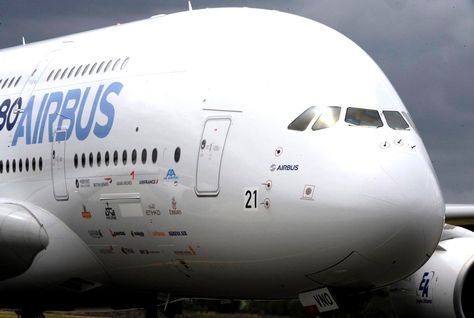Airlines operating the Airbus A380 aircraft will be required to perform wider inspections of the superjumbos after Europe’s air-safety regulator extended the checks to the entire fleet of the double-decker jetliner.
The wider inspections will follow a January 20 so-called airworthiness directive by the European Aviation Safety Agency that required checks for potential wing cracks only on 20 A380 aircraft that were among the most heavily used.
A total of 253 A380s have been ordered by 19 customers, with Dubai's Emirates Airline, which has ordered 90, being by far the biggest.

| Advertisement |
The new directive will cover the entire fleet of 68 aircraft, EASA spokesman Dominique Fouda said by telephone from Cologne on Wednesday.
Airbus, the largest maker of passenger jets, has attributed the cracks to the manufacturing process of the wings and has identified a two-step fix. Short-term repairs will take as many as five days for each plane, while a longer term solution will include new materials and a different way of assembly.
Qantas Airways, Australia’s largest carrier, suspended use of one of its Airbus A380 passenger jets for as long as a week after discovering cracks in wing parts, the carrier said on Wednesday.
Singapore Airlines, the first airline to put the A380 into service in 2007, has also repaired some of its A380s and has put the jets back into operation.
Hairline cracks discovered in some A380 wings in late December were initially not deemed critical, with Airbus calling for fixes only at the routine four-year checks.
A second series of bigger cracks around the central part of the wing were considered graver and prompted EASA to require the inspection of the first batch of 20 double-decker planes.
The updated directive was prompted by the first inspections a few weeks ago, Fouda said. The cracks were traced to the choice of a less flexible aluminum alloy used to make the wing brackets, the fashion in which fasteners are put through holes, and the stresses involved
The cracks have appeared just as Airbus is starting to move beyond the losses linked to production glitches that had dogged the airliner for years.
Airbus parent European Aeronautic, Space & Defence had aimed to break even on the model by 2015, as it wins new customers and ramps up production.
Emirates now has 20 A380s in service, Singapore has 15, Qantas has 12, Air France KLM Group has eight Deutsche Lufthansa has six, Korean Air Lines Co has five, and China Southern has two.
The aircraft has two levels and typically seats about 550 passengers in three classes. Airbus A380 aircraft









 Search our database of more than 2,700 industry companies
Search our database of more than 2,700 industry companies









